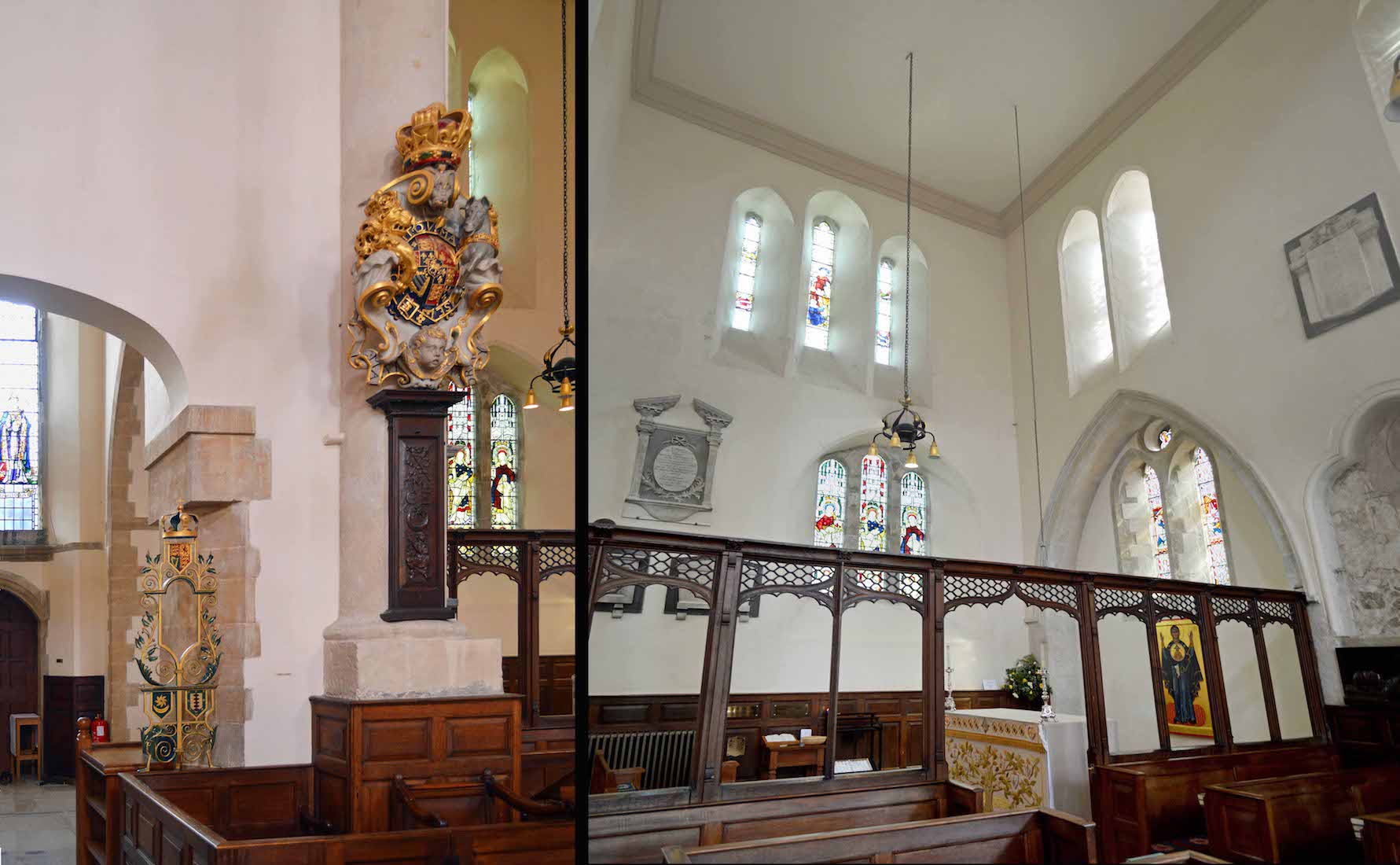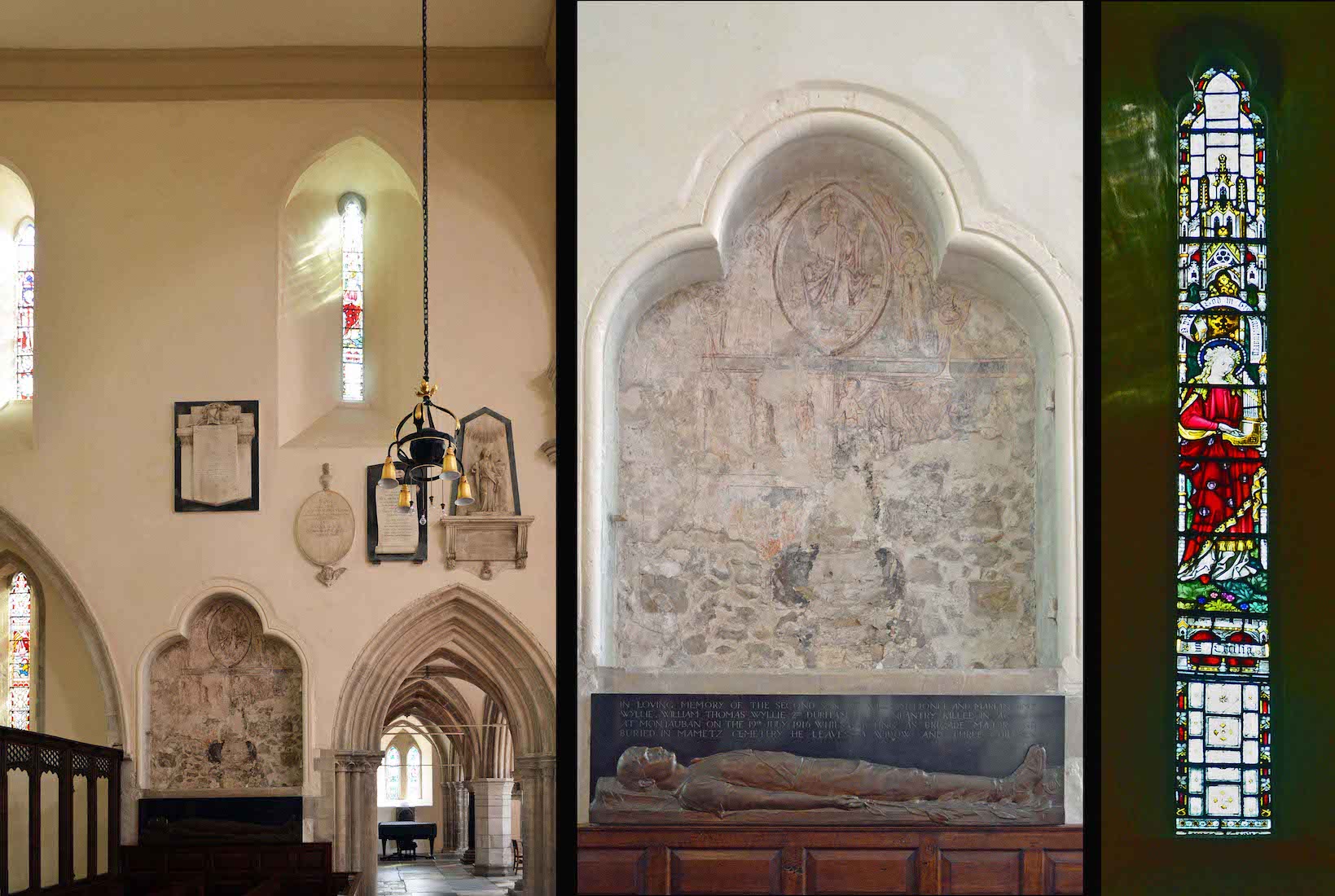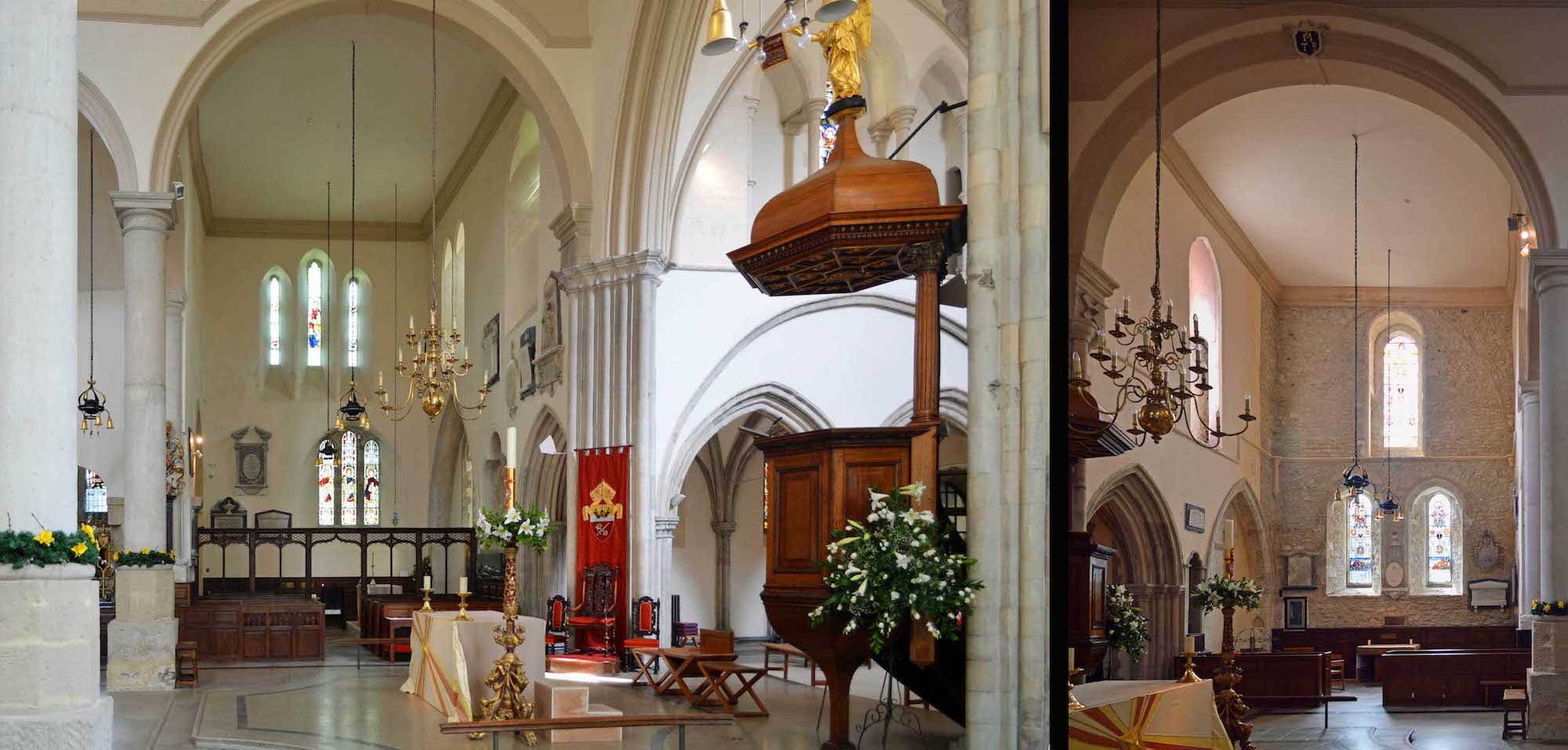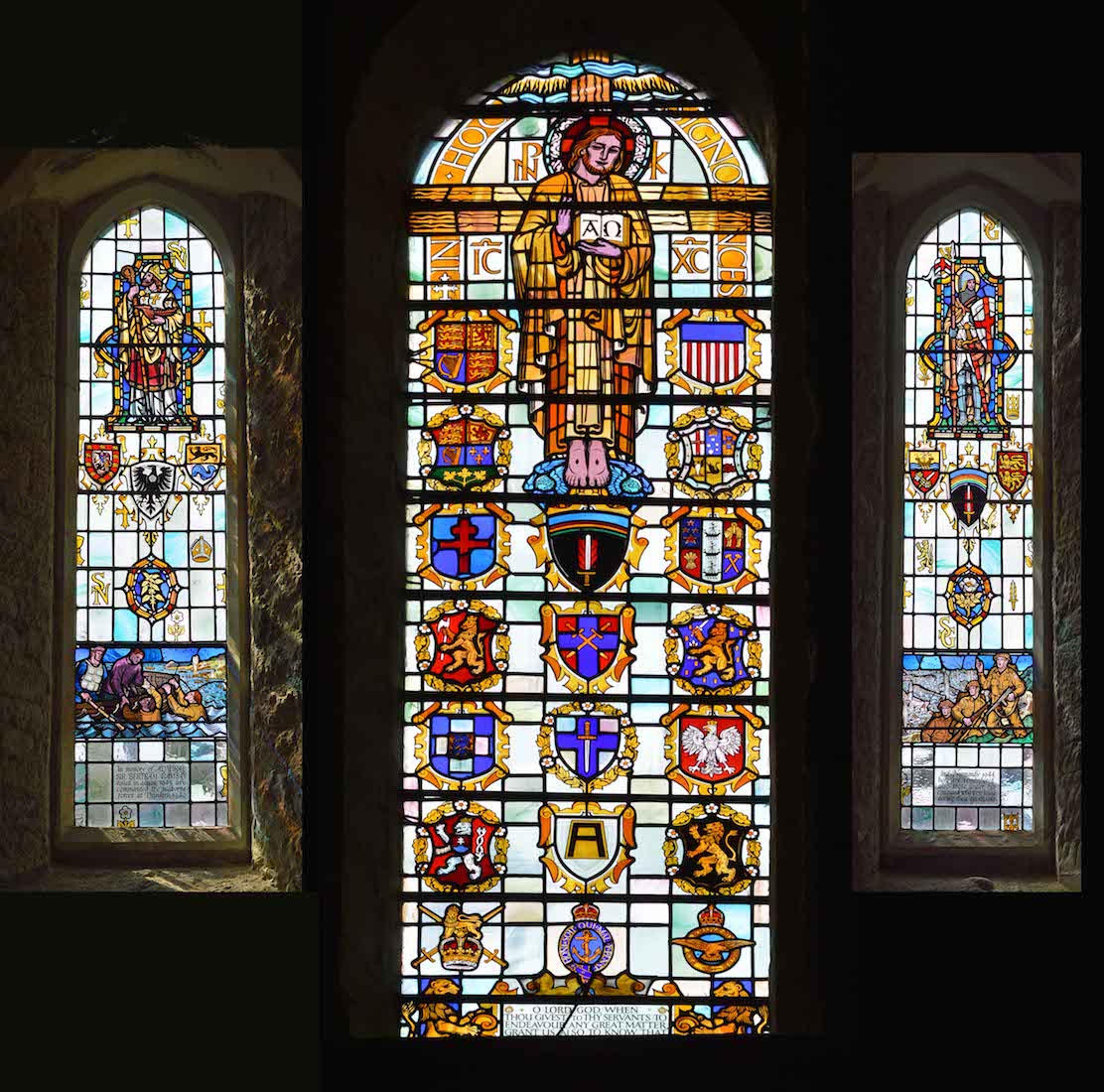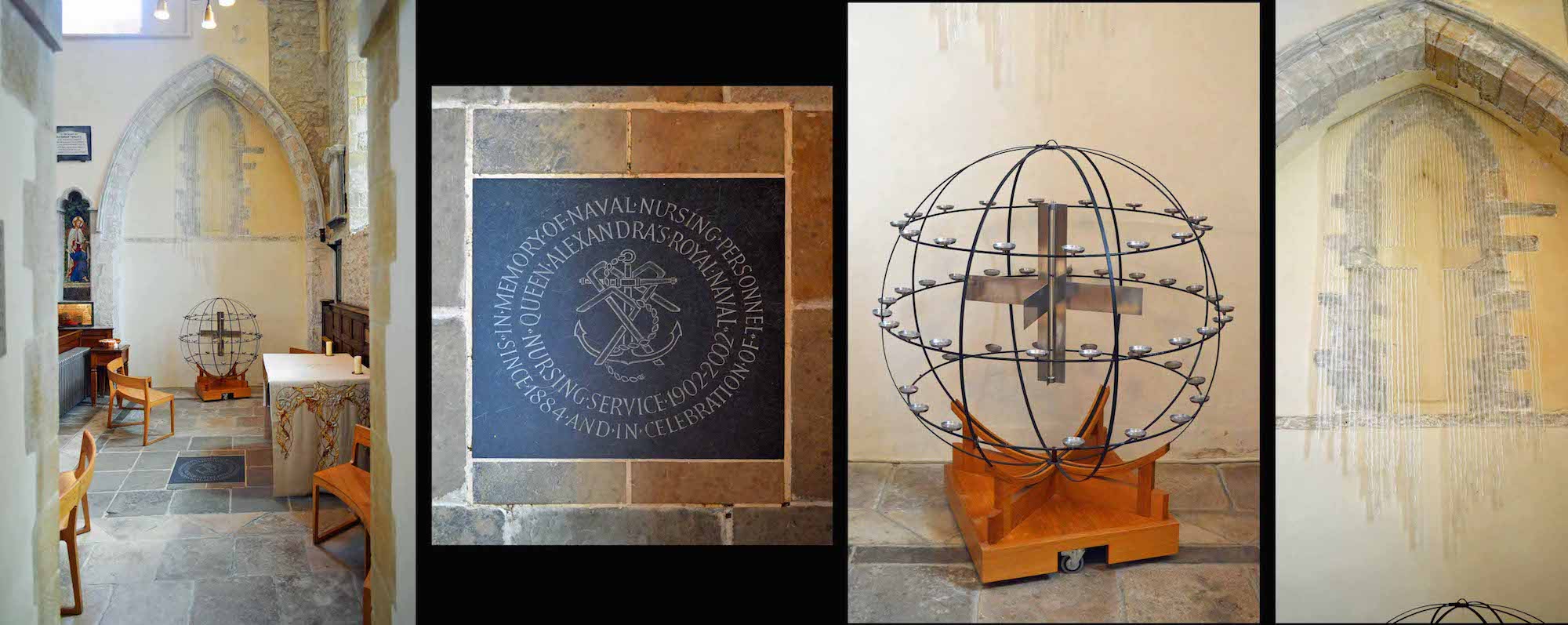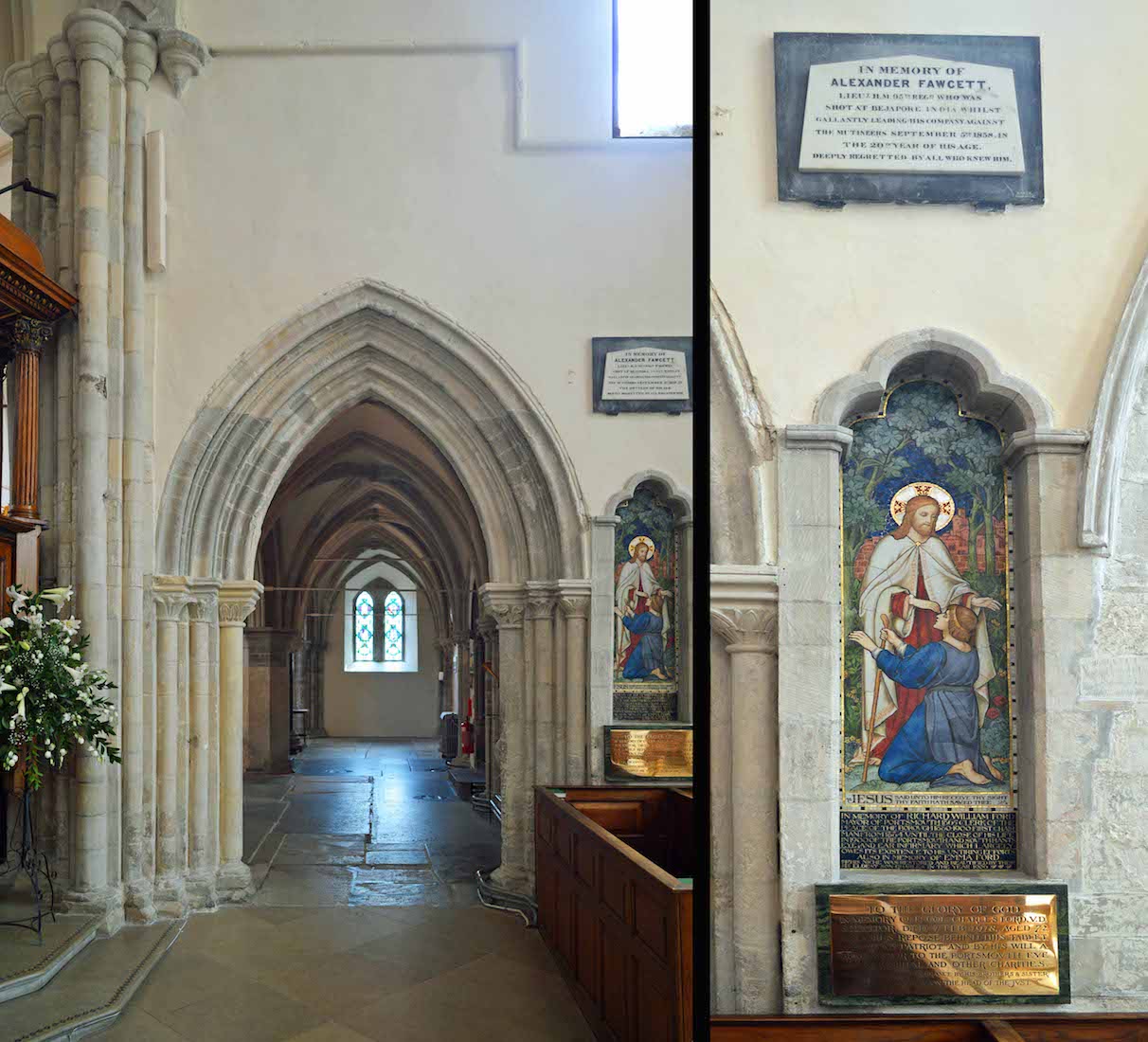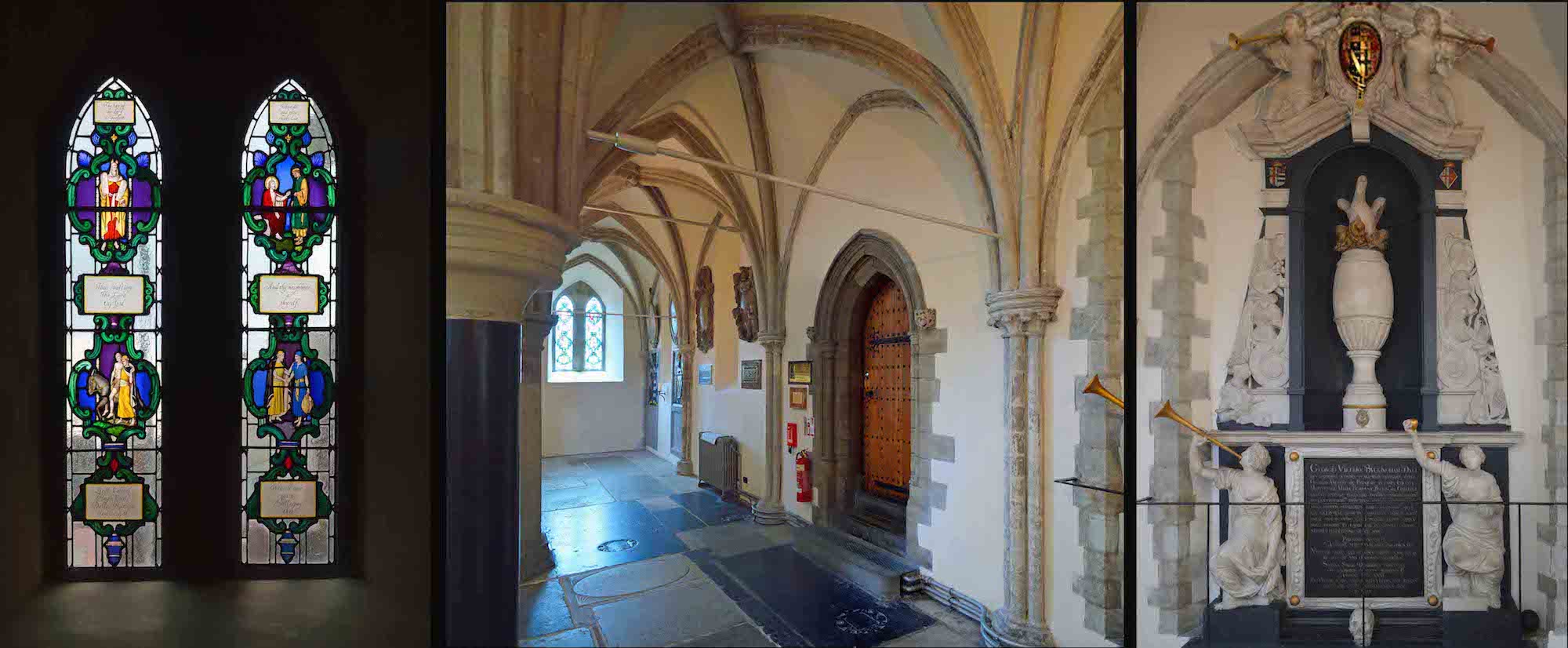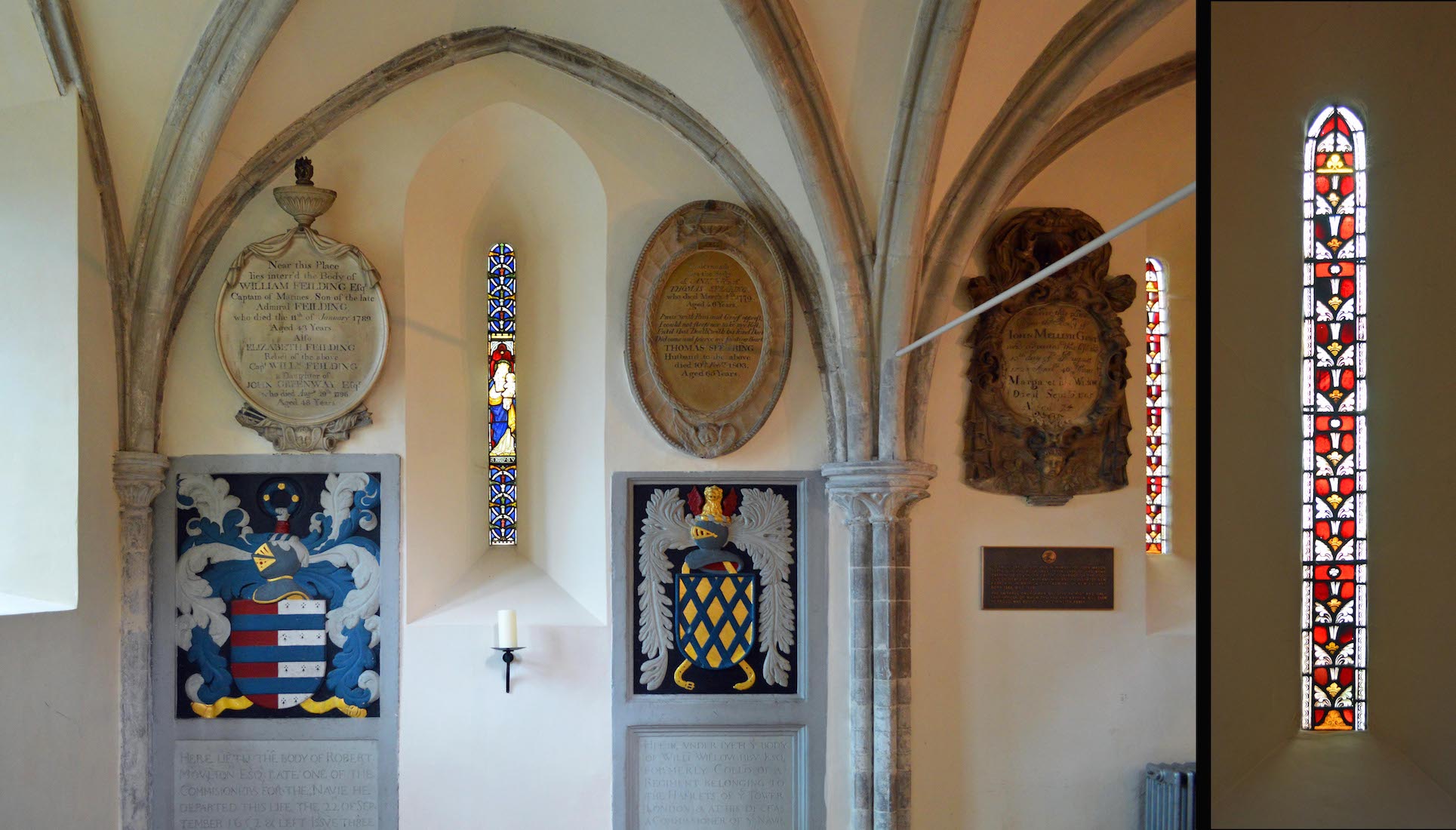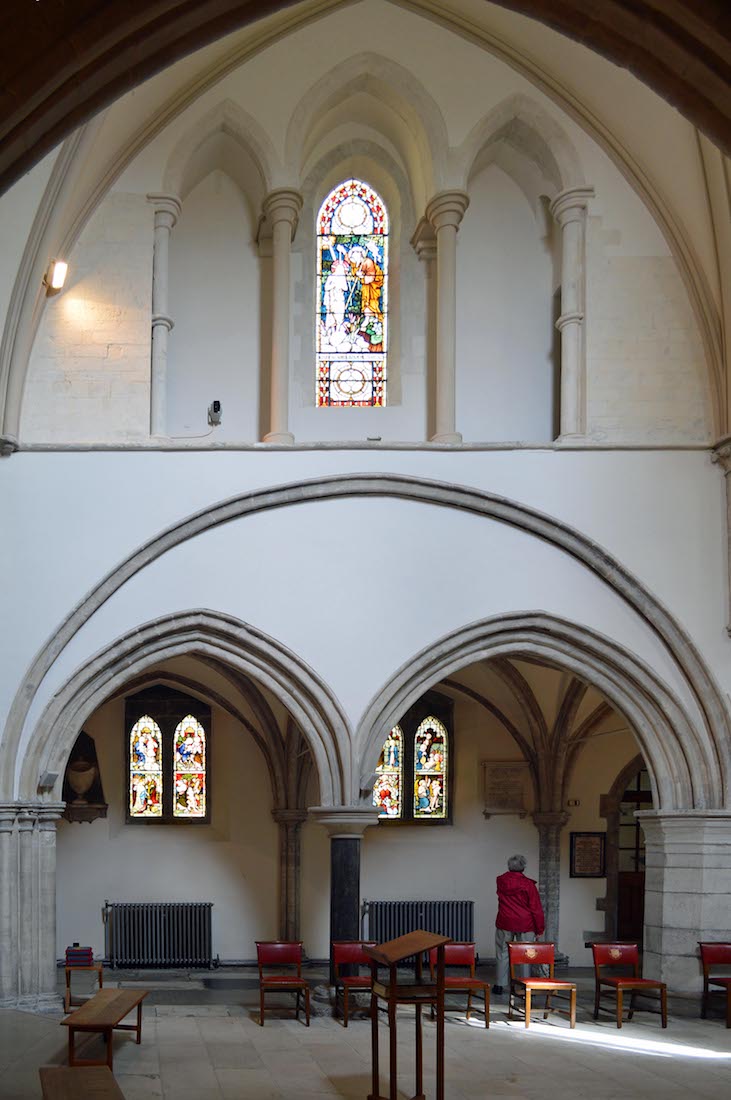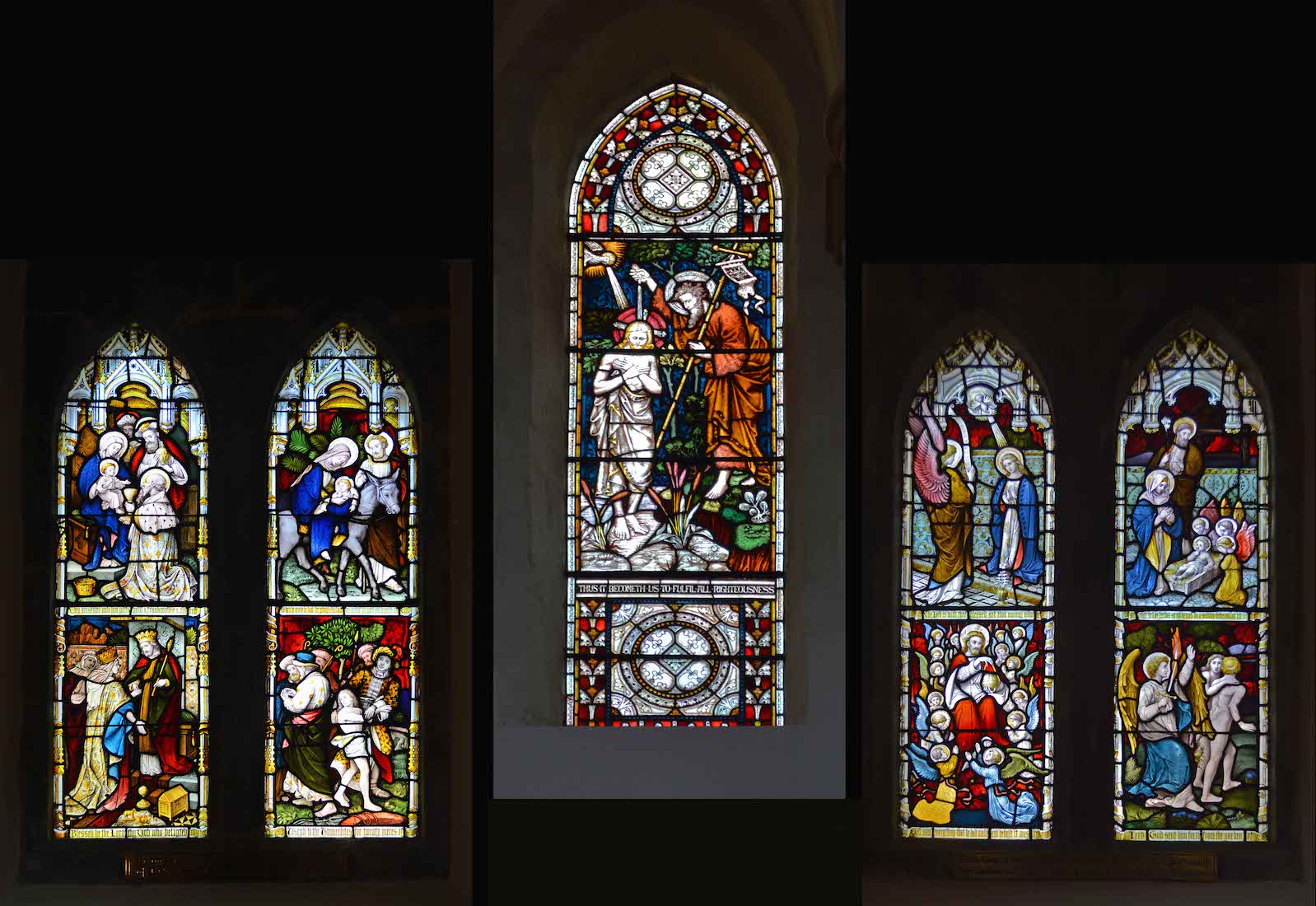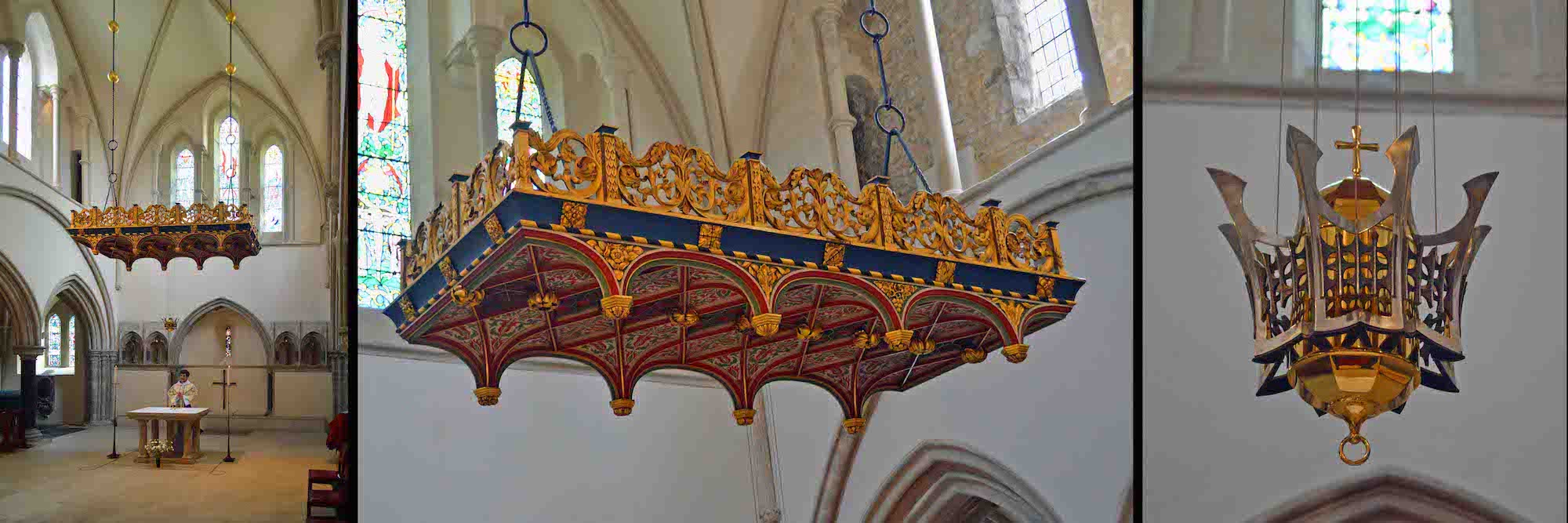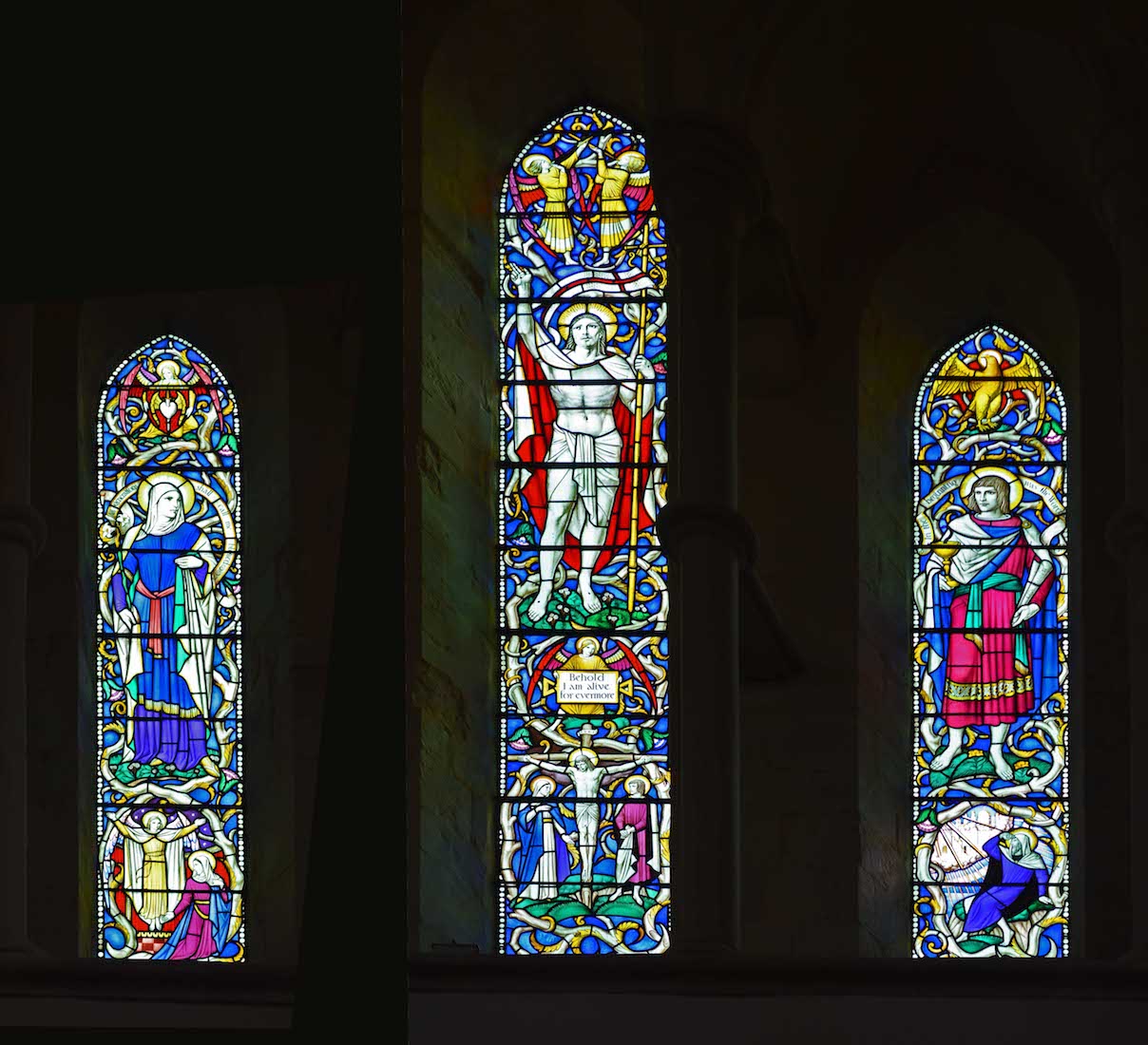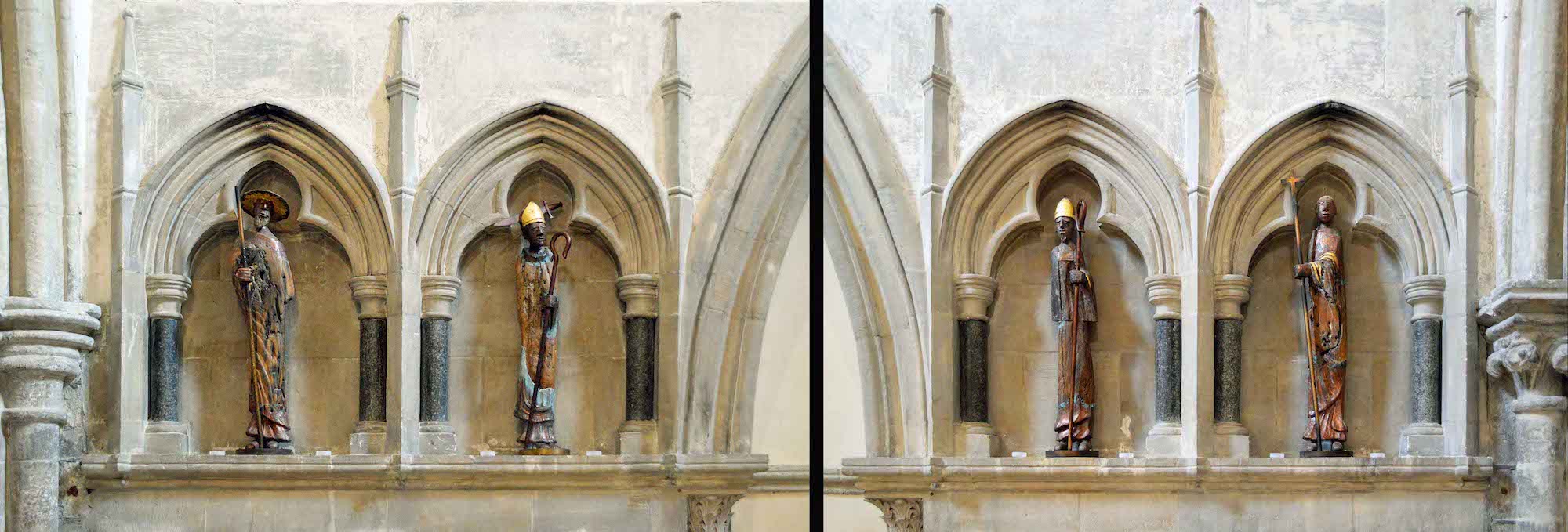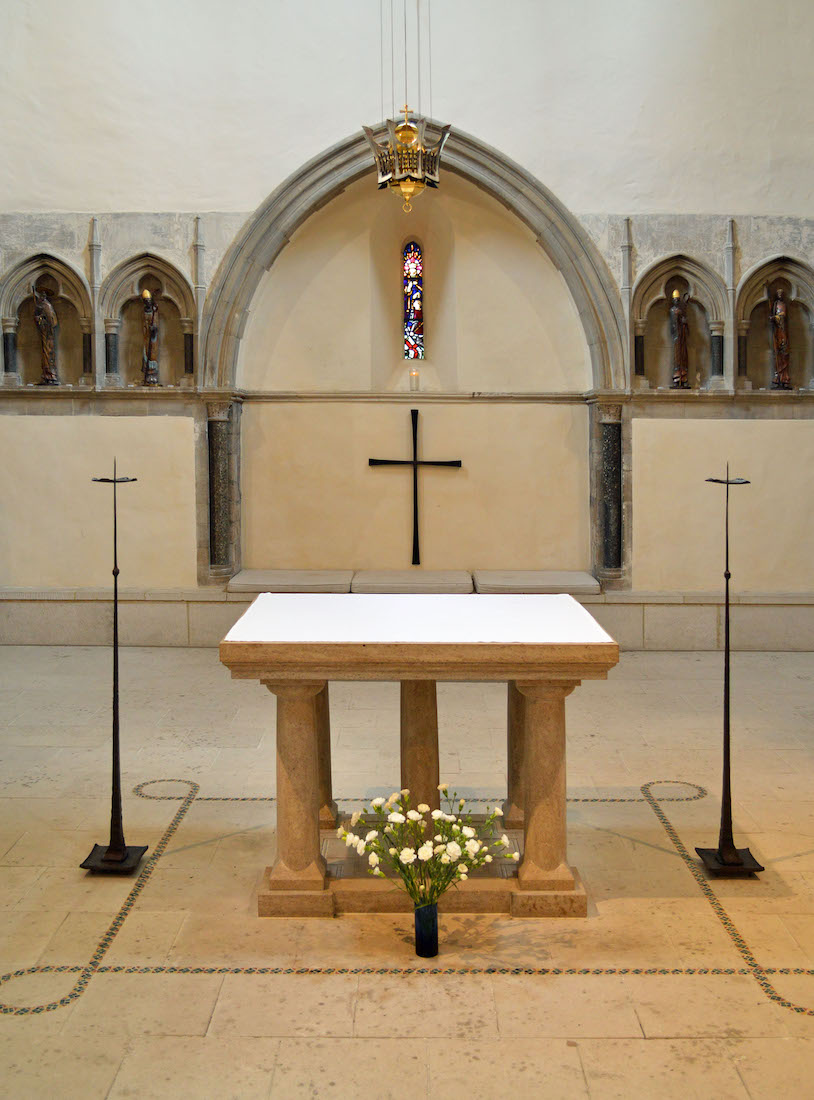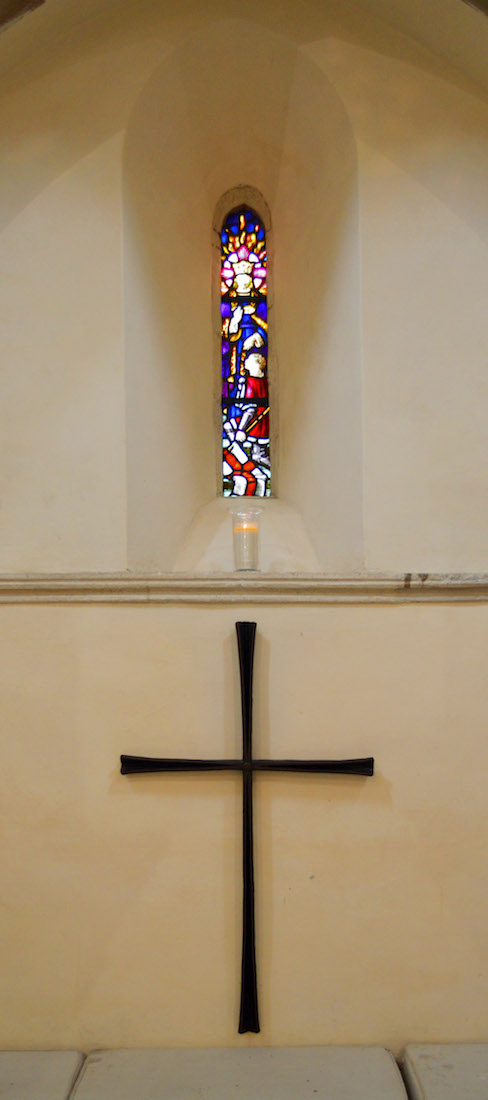
This is the remaining Eastern pair. The window at left remembers the Officers and Men of the Volunteer Battalion Hampshire Regiment who gave their lives in South Africa between 1899 and 1903. The window at right remembers the Founding of St.Thomas's Church. It depicts St. Thomas Becket, John De Gisors and Richard Toclive. St. Thomas, the patron saint of the Cathedral, was murdered in Canterbury Cathedral in 1170, shortly before the foundation of this church. He is seen robed as an archbishop holding a broken sword, the tip of which is under his foot. PLAN
42. NORTH QUIRE AISLE VIEWS
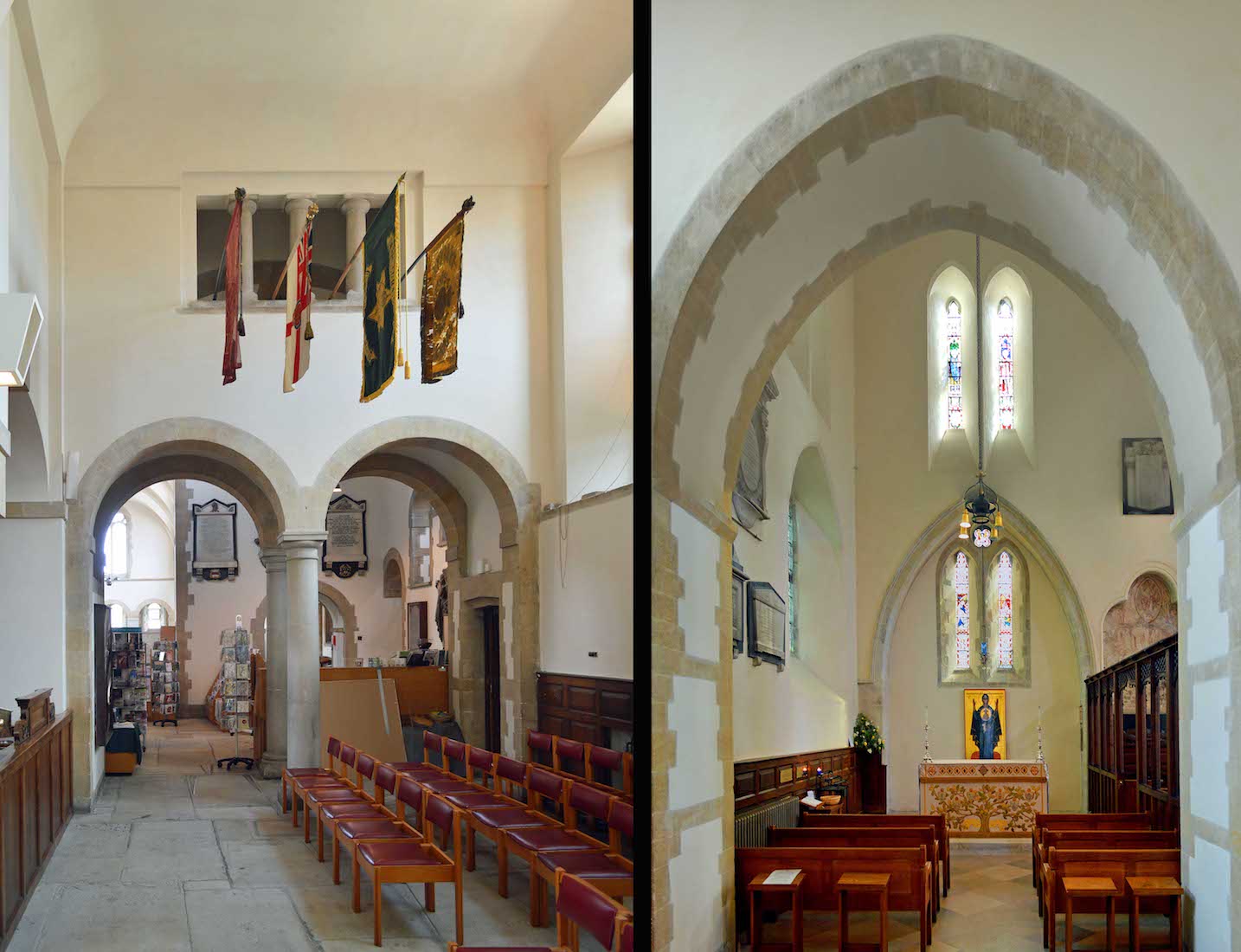
We stand in the North Quire aisle and look in both directions. To the West is the shop in the North transept, and in this direction we notice a set of hanging regimental colours associated with the Hampshire Regiment. In the other Eastern direction is the Lady Chapel. The Lady Chapel was originally consecrated by Bishop Godfrey de Lucy in 1196.
43. LADY CHAPEL ALTAR AND ICON
The Lady Chapel altar has a wonderful cloth with the inscription, ‘Lignum vitae in midi Paradiso’ (the tree of life in the midst of the garden (Gen 11:9)). On the branches are hanging shields with various maritime images. Above the altar hangs a large icon (Our Lady of the Sign) of the Virgin Mary in worship with hands raised. ‘My soul doth magnify the Lord ... .’ It was painted (written!) by Sergei Fydorov in 2001.
44. VIEW ACROSS THE QUIRE TO THE LADY CHAPEL
At left are two items with Royal connections. The lower one at left appears to be a stand for holding a small notice or banner. The more imposing one on the column stands on a carved half-pedestal and incorporates a crown and a Royal coat of arms. The distant view of the Lady Chapel at right gives us a guide to the Chapel windows.
45. LADY CHAPEL WINDOWS
The central light of the window at left has the theme ‘Charity (love) never fails’. There are Bible quotations on the two outer windows. The East high window with two lights depicts St Nicholas and St George. The next triplet of lights shows three maidens representing Mercy, Peace and Truth. And the final pair shows Jesus walking on the water, with Peter coming towards him.
46. WALL PAINTING, ST CECILIA WINDOW
Next to the Lady Chapel in a trefoiled niche is a very old medieval wall painting, and below, the tomb memorial of William Thomas Wyllie, killed in action in 1916. The painting dates from around 1250, and depicts the Last Judgement. It is almost obliterated apart from a lens shaped portrayal of the Risen Christ. It was uncovered in 1904. High above (right picture) is a single lancet window depicting St Cecelia, the patron saint of music.
48. RECONCILIATION CHAPEL WINDOWS
There are three windows in the South wall of the Reconciliation Chapel. The outer two form a matching pair. They show scenes from Dunkirk and Normandy and are in memory of Admiral Sir Bertram Ramsay and the men under his command. St Nicholas and St George make an appearance in these windows. The beautiful central window shows the Risen Christ surrounded by various crests.
49. RECONCILIATION ITEMS
Here we see the Chapel itself, a floor plaque in memory of members of Queen Alexandra’s Royal Naval Nursing Service, and a prayer globe for holding candles. On the far wall, white threads hang in a window frame, outlining a Cross.
50. TO ST THOMAS’S CHAPEL
A further archway leads from the Reconciliation Chapel through to St Thomas’s Chapel. The painting at right shows Jesus healing the blind man – ‘Thy faith hath made thee whole’. The painting is in memory of one time mayor of Portsmouth, Richard William Ford, and his wife Emma..
51. SOUTH AISLE OF THE CHAPEL
We now investigate the South aisle of the St Thomas’s Chapel. The end windows have four pictures with texts: Moses (with horns!) and the Law, Jesus and the rich young ruler, and below, two scenes from the parable of the Good Samaritan. At right is a very fancy monument to George Villiers, First Duke of Buckingham: an English courtier, statesman, and patron of the arts.
52. MONUMENTS
The two coloured monuments commemorate Colonel William Willoughby and Robert Moulton, commissioners of the Admiralty, who restored the dockyard between 1649 and 1652, and recommenced shipbuilding there after an interval of 141 years. The central strip window depicts the Madonna and Child, and the strip window at right may be designed to suggest military awards.
53. NORTH WALL OF THE CHAPEL
Although this space is designated St Thomas’s Chapel, in the absence of another high altar I find it hard not to think of this space as the Cathedral sanctuary. Looking across to the Northern wall, we see there are some more interesting windows.
54. NORTH CHAPEL WINDOW
On this wall there are two pairs of lower lancets, and a high window in the centre. The larger central window shows the baptism of Jesus by John the Baptist. The lower four windows form a set, each winder having two panels. From left to right, the top panels show the coming of the Magi, the flight into Egypt, the Annunciation, and the Nativity. The lower panels show Old Testament scenes. Again from left, the Queen of Sheba with King Solomon, Joseph sold to the Ishmaelites, the Creation, Adam and Eve expelled from the Garden.
55. NORTHEAST CORNER OF THE CHAPEL
At left is a door out to the Memorial Garden. The strip window shows St Thomas of Canterbury. There are various memorial plaques on the wall, and then a double lancet window in the East wall. This window expresses several statements of the Creed.
56. CANOPY AND PYX
Hanging over the altar is a ‘tester’ or wooden canopy, dating from 1939. Beneath this is suspended the hanging pyx, a silver crown surrounding a golden casket which contains the sacramental bread consecrated at the Eucharist each Sunday.
57. EAST WINDOWS
The three Eastern windows show Mary, Christ and John. At left is a young Mary with the text ‘All generations shall call me blessed’. In the centre is the Crucifixion and the Risen Christ with the text ‘Behold I am alive for evermore’. And at right is a young St John with a symbolic eagle above, and the text ‘In the beginning was the word’.
58. STATUETTES
Across the East wall and under the windows are four niches, each containing a statuette. These were all made from driftwood by Peter Eugene Ball, and represent St Augustine of Canterbury, St Thomas of Canterbury, Bishop Lancelot Andrews, and St Columba.
59. ALTAR
The simple altar was designed by Michael Drury. St Thomas’s Chapel is the oldest part of the Cathedral, and was the original chancel of the medieval church. Built in around 1185, it was extensively reconstructed in 1843.
60. CHAPEL CROSS AND WINDOW
We finish our tour of Portsmouth Cathedral at this Chapel Cross and window. The Cross is the universal symbol of Christianity. This Cross has a simple design with slightly flared ends. The lancet window is also interesting, featuring the Risen Christ. Before him kneels a young man in armour and carrying a flag with the St George Cross. Thought-provoking!
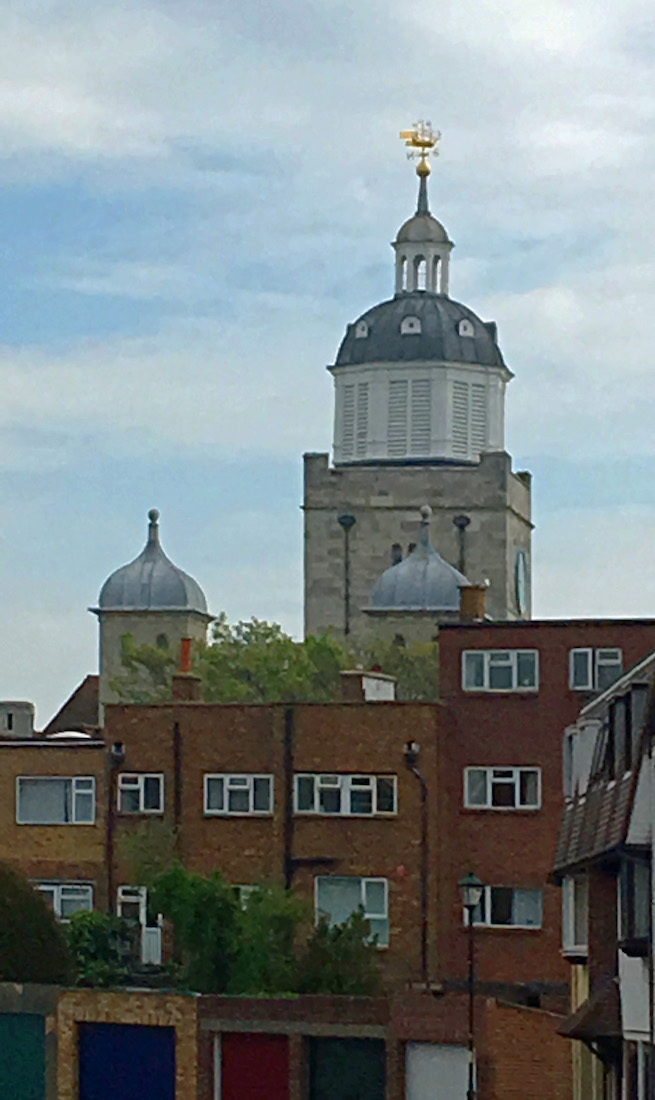
CONCLUSION
I hope you have enjoyed visiting the Portsmouth Cathedral with me. What an interesting cathedral it is!
The link for the Cathedral website is:
I am happy to receive constructive comments or corrections concerning this website. The best websites are the ones which have no errors! I am grateful to my wife Margie who came with me, and who has proof-read these pages.
With one exception, the photographs which appear on this site are all mine. They can also be found in higher resolution at:
https://www.flickr.com/photos/paulscottinfo/sets/
As usual, the text has been drawn from many sources. I gratefully acknowledge the ever-helpful Wikipedia, and the Cathedral booklet ‘Portsmouth Cathedral’.
Another valuable resource is
http://www.memorialsinportsmouth.co.uk/
From this I discovered a number of windows with more subtle decoration that I had missed! One needs more than half a day to photograph a cathedral ...
Paul Scott Site created 08 / 2017; reformatted 04 / 2020.

